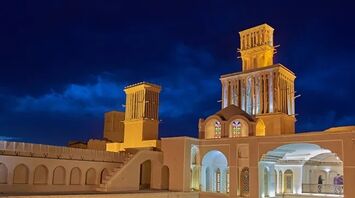Ancient Innovations for Modern Cooling: Lessons from the Past

In ancient times, civilizations devised methods to remain cool in extreme heat, techniques have become increasingly relevant today. Modern buildings rely heavily on electricity and air conditioning, often featuring glass facades and sealed windows. However, prolonged power outages during heat waves, such as the one Houston experienced in July 2024 after Hurricane Beryl, make these buildings insufferable. By studying ancient approaches, we can design for hotter, drier climates without overreliance on modern technology.
Sumerians: Collective Cooling Strategies
About 6,000 years ago, in what is now southern Iraq, the Sumerians employed thick walls and small windows in their buildings to minimize heat. They used materials like adobe or mud which absorbed heat by day and released it at night. Additionally, constructing buildings adjacent to one another minimized wall exposure to direct solar radiation. Small courtyards allowed for light and ventilation, while narrow streets provided daytime shade, making city navigation comfortable.
Egyptians: The Original Wind Catchers
Ancient Egyptians countered heat with mud brick homes and stone palaces featuring courtyards. Many opted to sleep on rooftop terraces which were cooler at night. They also invented the "mulqaf," tall wall openings facing the wind to capture and funnel it indoors for cooling, a method still used in the Middle East and Central Asia today.
Puebloans: Solar Orientation
In the American Southwest, the Puebloans constructed homes using mud brick and rock, emphasizing both small windows and shared walls to keep interiors cooler. They strategically placed communities under south-facing cliffs to ensure summer shade and winter sunlight, leveraging solar orientation to regulate temperature.
Muslim Caliphates: Efficient Water Use
During the eighth century, Northern African and Spanish Muslim caliphates excelled in rainwater harvesting. Rooftop run-offs were collected in cisterns to irrigate plant-filled courtyards, a method still used in cities like Mendoza, Argentina.
Mayan and Teotihuacan Innovations: Rainwater Harvesting
Cities like Xochicalco in Mexico utilized pyramids, plazas, and aqueducts to channel rainwater into large cisterns, helping them cope with dry seasons. Modern efforts in places like India emulate this practice to enhance urban resilience through stored rainwater.
Integrating Ancient Techniques into Modern Design
Lessons from these ancient cultures are already influencing contemporary architecture. Architects today can optimize southern exposure and incorporate shading devices to manage solar radiation, combining rainwater harvesting systems for urban landscapes to save water and bolster resilience. Though retrofitting existing glass-domineering cities is complex, adapting tried-and-true historical methods can reduce dependency on air conditioning and promote sustainable living in a warmer, drier world.
By revisiting these time-tested strategies, we can develop resilient urban environments better suited for future climate challenges.
Earlier, SSP wrote about the secret behind your cat's sense of smell.



















